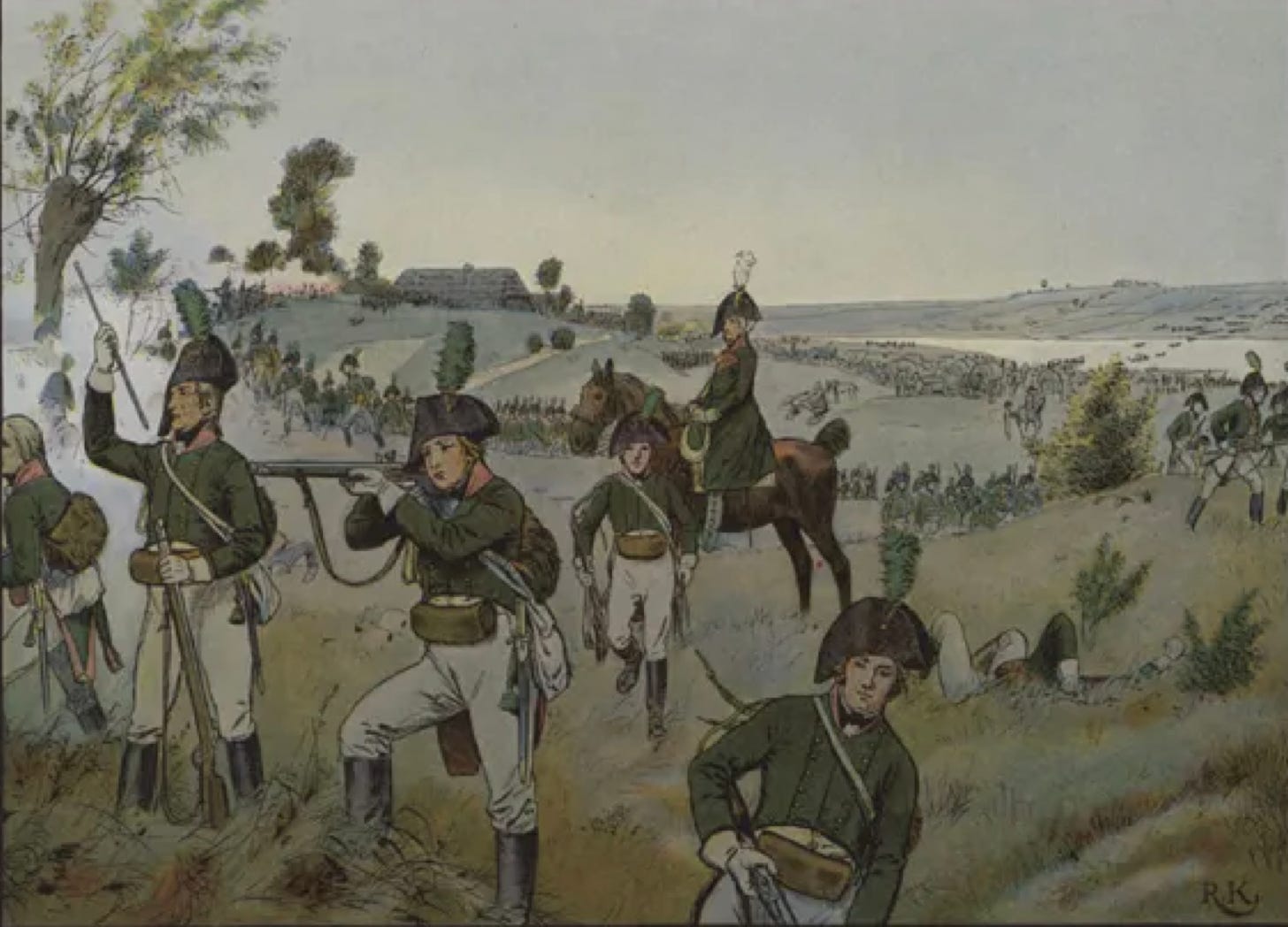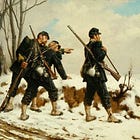Altenzaun 1806
German Jäger Battalions (Part II)
Every so often, I rewrite a piece posted in days of yore, either because the original failed to meet my standards or because I found better sources. The article replaced by this little essay met both of those criteria.
In 1806, Prussia suffered two great catastrophes. First, on 14 October of that year, the main field army of that kingdom lost the great battle of Jena-Auerstadt. Then, in the course of the great retreat that followed, many Prussian soldiers failed to offer the sort of resistance that might have prevented defeat from turning into disaster.
In the second week of the latter debacle, Ludwig Yorck von Wartenburg led a brigade-sized task force in a rear guard action that provides a rare exception to the general rule of Prussian incompetence. Colonel Yorck, had recently completed six years as the commanding officer of the Jäger Regiment, employed an ad hoc brigade to cover the retreat, across the Elbe River, of a Prussian army corps.
The task force led by York consisted of a section of artillery (armed with two light field guns), six companies of Jäger, and three battalions of fusiliers. (The Prussian Füsiliere of this era occupied the borderlands that separated the forests of the Jäger from the open plains inhabited by the musketeers and grenadiers of line infantry regiments. That is, while armed with smooth-bore shoulder arms and capable of fighting in close order, Füsiliere were also capable of deploying as skirmishers.)
Infiltrating through woods and underbrush, the Jäger took up firing positions between the force they were protecting and the village of Altenzaun. When, at four in the afternoon (and thus, shortly before sunset), French columns began to advance on the crossing point of the Prussian army corps, some of the Jäger began to fire. Others exploited broken ground to move around the sides of the French force. As a result, the latter soon found itself in the middle of a three-sided cross-fire.
As the French columns began to withdrew from the fire sack, York sent his fusiliers into the fray. Formed up in the manner of line infantry, the three battalions drove the survivors of the ambush into Altenzaun.
As the sun set, Prussian working parties lit a large number of camp fires in places just vacated by the army corps that was crossing the Elbe. This, a time-honored ruse de guerre, served to reinforce the notion that the force that had just stopped the French advance was larger than a single brigade.
Sources:
Dagobert von Rentzell Geschichte des Ostpreußischen Jäger Battalions Nr. 1 (History of the 1st East Prussian Jäger Battalion) (Berlin: E.S. Mittler, 1882) pages 14 and 15
Peter Hofschröer Prussian Light Infantry, 1792-1815 (London: Osprey, 1984)
Curt Jany Urkundliche Beiträge und Forschungen zur Geschichte des Preußischen Heeres (Berlin: E.S. Mittler, 1901)
Curt Jany Geschichte der Preußischen Armee bis zum Jahr 1807 (Berlin: Karl Siegesmund, 1929) Volume 3
Peter Paret Yorck and the Era of Prussian Reform (Princeton: Princeton University Press, 1966)
The links will take you the websites of either the Hathi Trust, the Internet Archive or the Kujawsko-Pomorska Digital Library.
For further reading, please consult:
.







Hurrah for Colonel Yorck and his troops as that is courage, determination and initiative in action. This underscores the need for continuous and careful reconnaissance for any force, particularly an attacking one, if I ever saw it.
Great Article! Yorck was a member of Scharnhorsts Militarische Gesellschaft. As was his Chief of Staff Rauch. Scharnhorst advocated a change to infantry tactics to include the light infantry. There are many citations for Yorck in the book the Enlightened Soldier by Dr Charles E White